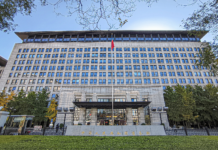The recent rains led to massive floods that caused havoc in major parts of the country. We use the word ‘unprecedented’ often in this regard when the fact is that heavy rains and flash floods are not new phenomena. When it had rained heavily during the British rule, they build the flood protective (FP) bund till Manchhar Lake back in 1916; over a hundred years ago.
Another channel was subsequently added to the whole mechanism in the shape of the Main Nara Valley (MNV) drain along Mehar and Larkana. It is the same drain, by the way, that has been in use since 1972-73 to carry rainwater from three districts. Then, in 1954, the Suparoo bund was built.
These three structures represent a sort of line of defence to save us from rainwater flowing from Balochistan. There are four sub-divisional officers, two engineers and about 200 baildars (permanent bund workers) manning these bunds. Altogether, there are close to 2,000 baildars in the province, but most of them simply draw their respective salaries. Simply put, they are ‘ghost’ officials just as we have ‘ghost’ teachers in schools.
There is a budget worth billions of rupees for the water-flow management mechanism cited above, but there have been no meaningful repairs in the last over a decade. Even the 18th amendment could do little to convince the provincial authorities to behave responsibly in the manner.
We all know where the money ends up landing, but what should the growers do who have been left in the lurch with their lands inundated in the affected districts? The rains were not unprecedented.
The floods were not unprecedented. But the disaster has really been unpreceden-ted because the human element made it so.
ZAHID HUSSAIN JATOI
MEHAR





















